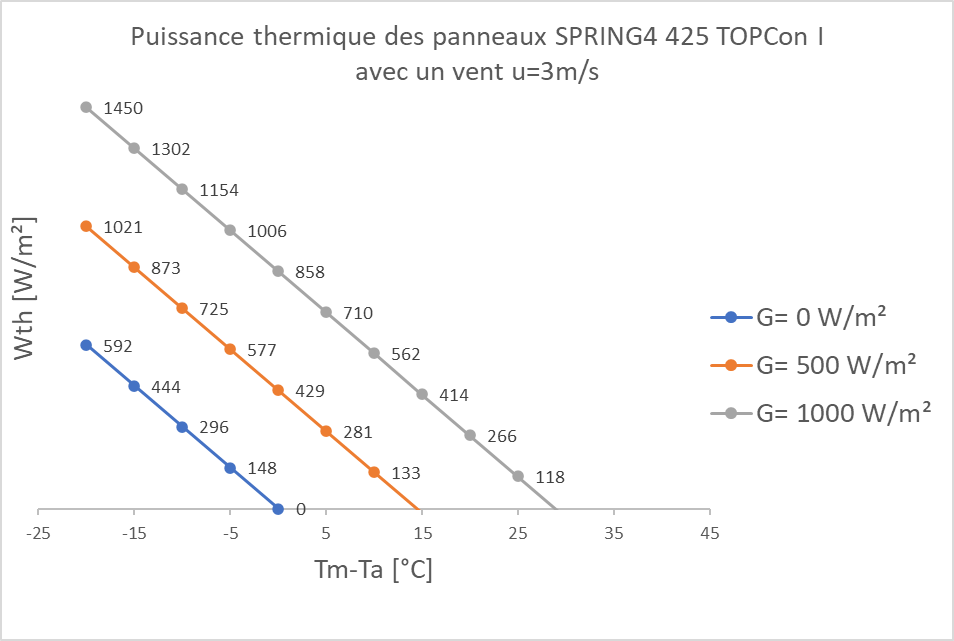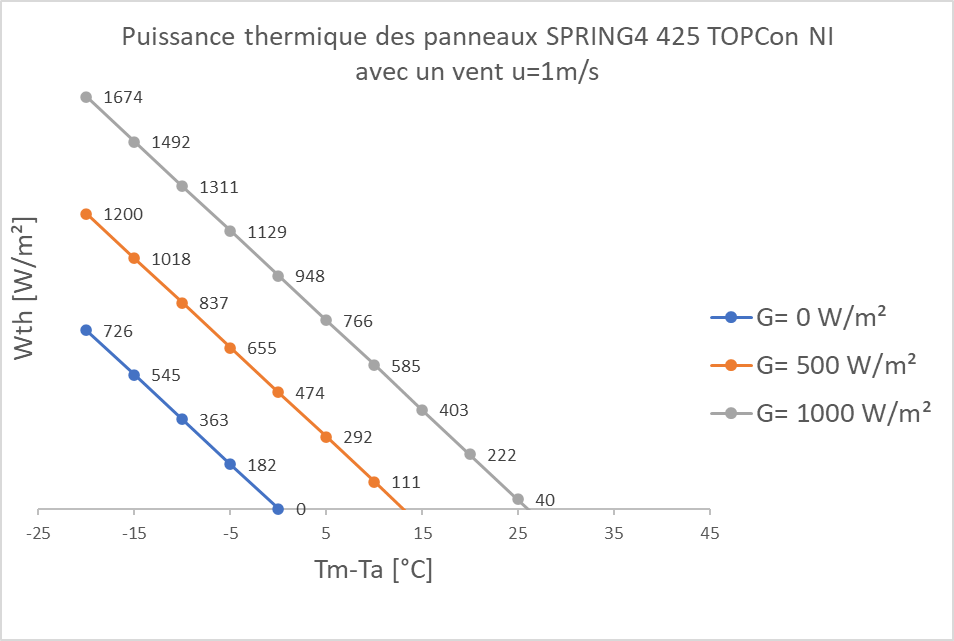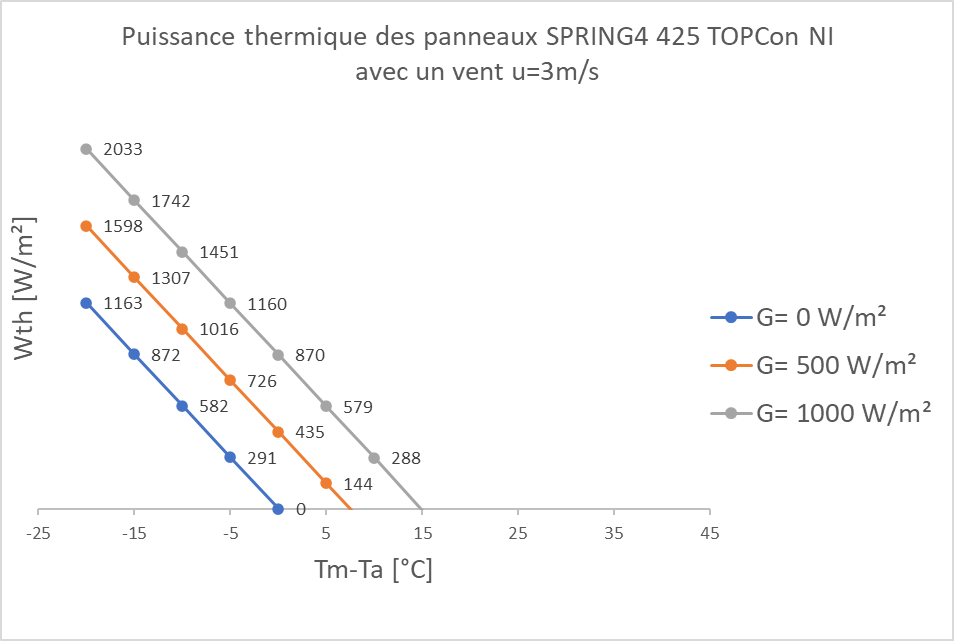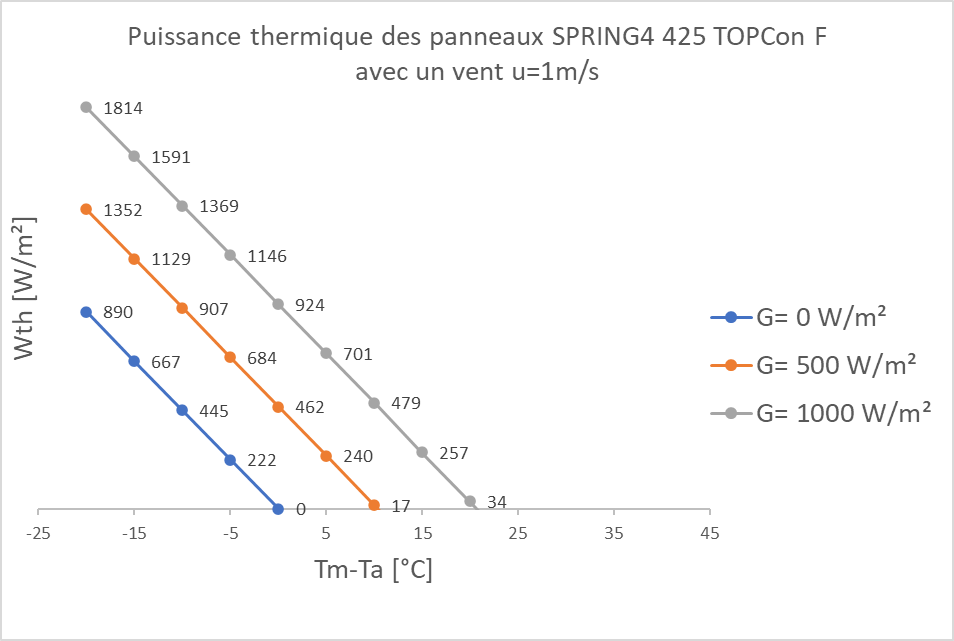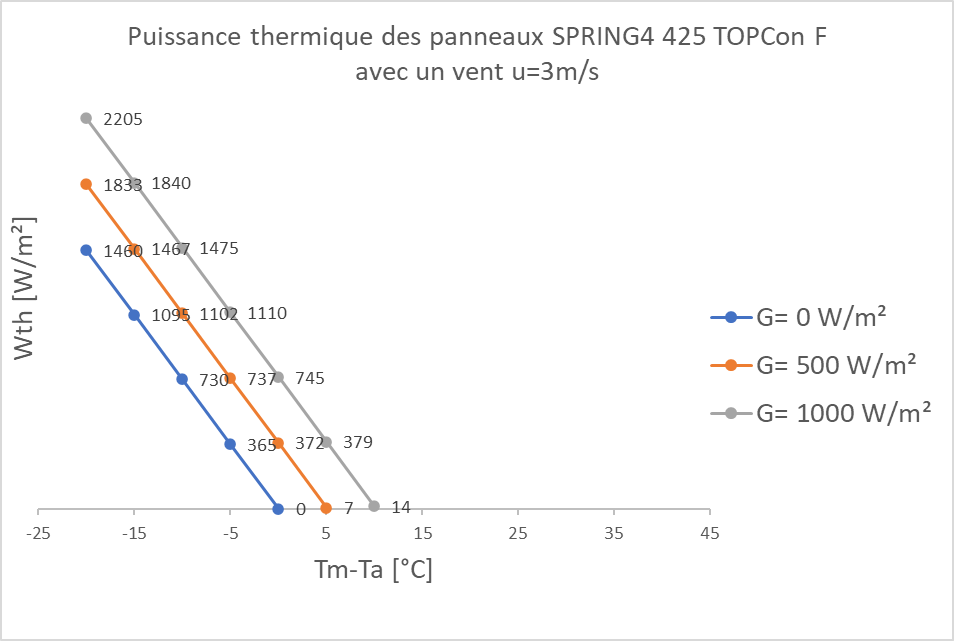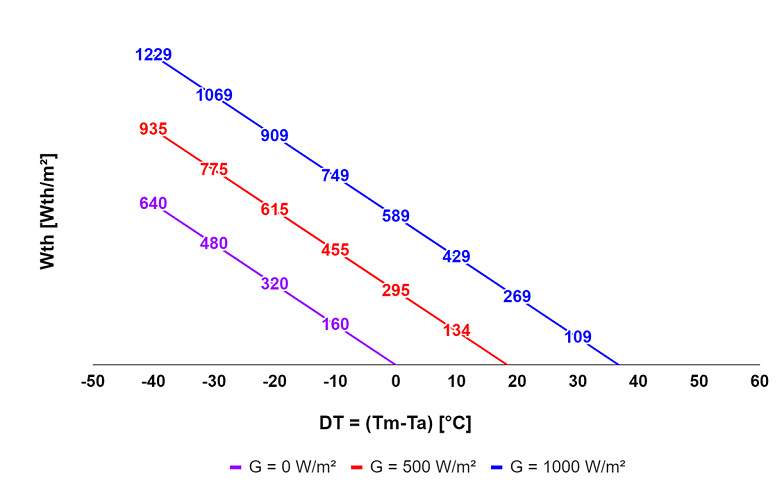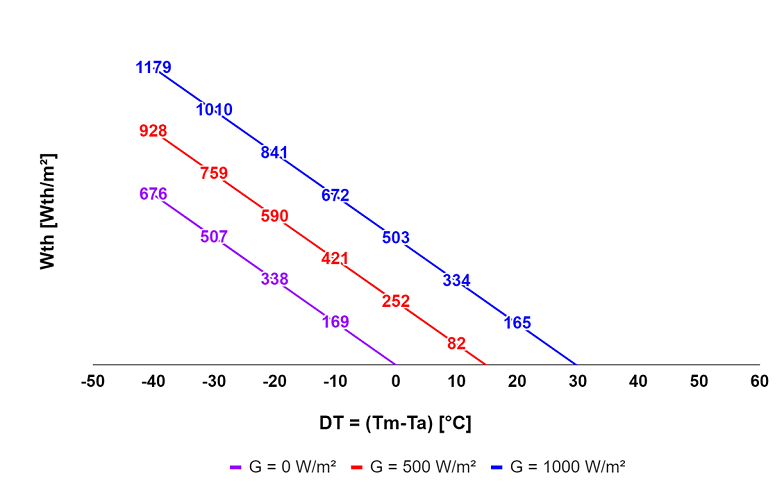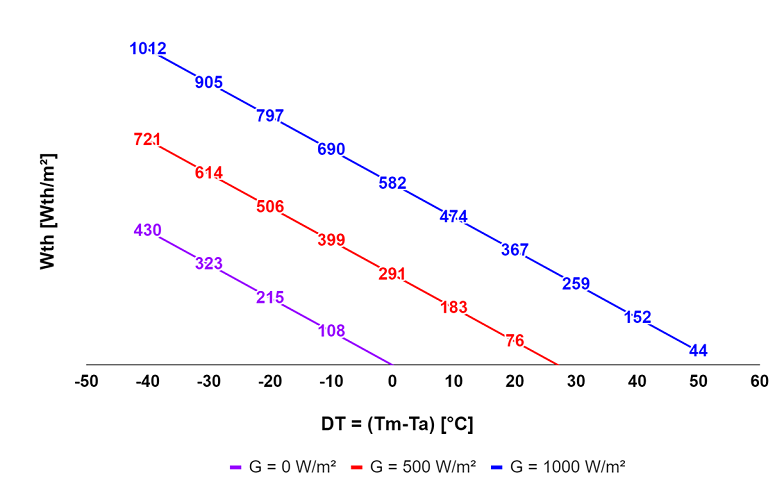How does the thermal power output of the SPRING panel change according to outdoor conditions?
As with all thermal solar panels, the thermal power of our Dualsun panels varies according to several parameters.
To analyze in more detail the parameters that influence the thermal power (Pth) of a solar panel, let's recall the calculation formula:
|
a0 = Panel optical efficiency [%]
a1 = Loss coefficient [W/K/m²]
A = Panel area [m²]
G = Solar irradiation [W/m²]
∆T (water-air) = Tm - Ta [°C]
Tm = Average temperature of the fluid in the panel = (Tin + Tout) / 2 [°C]
Tout = Panel outlet fluid temperature [°C]
Tin = Panel intlet fluid temperature [°C]
Ta = Ambient air temperature [°C]
On the other hand, the values of the coefficients a0* and a1* depend on the coefficients determined during the EN 9806:2017 certification tests for unglazed solar collectors carried out and on the wind speed.
a0 = eta0 - c6*(u-3)
a1 = c1 + c3*(u-3)
u = Wind speed [m/s]
* In the data sheets these values are calculated with a wind speed u = 1 m/s.
Thermal power curves
SPRING4 425 TOPCon Insulated
u=1m/s
SPRING4 425 TOPCon Insulated
u=3m/s
SPRING4 425 TOPCon Non Insulated
u=1m/s
SPRING4 425 TOPCon Non Insulated
u=3m/s
SPRING4 425 TOPCon Finned
u=1m/s
SPRING4 425 TOPCon Finned
u=3m/s
SPRING NON INSULATED
SPRING INSULATED


